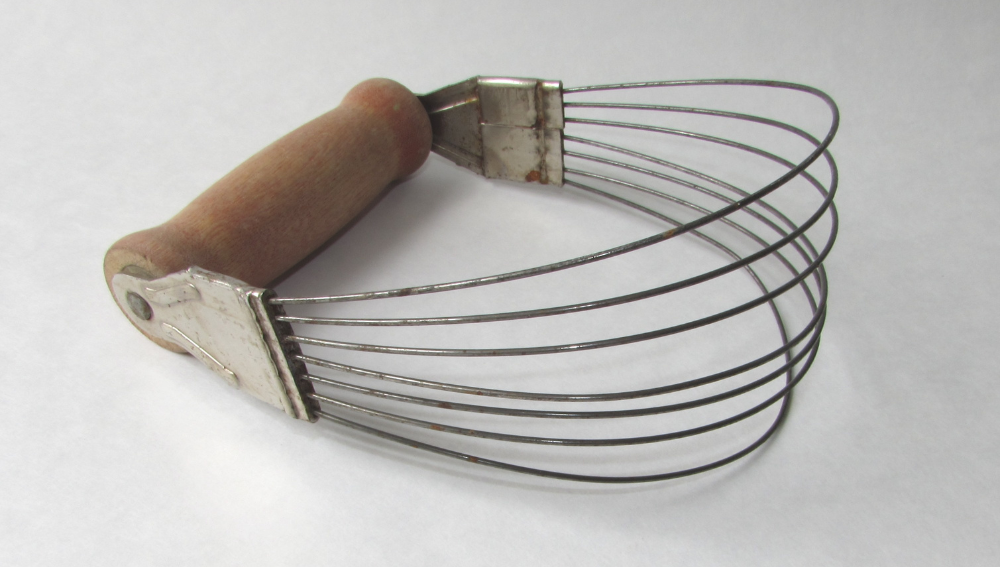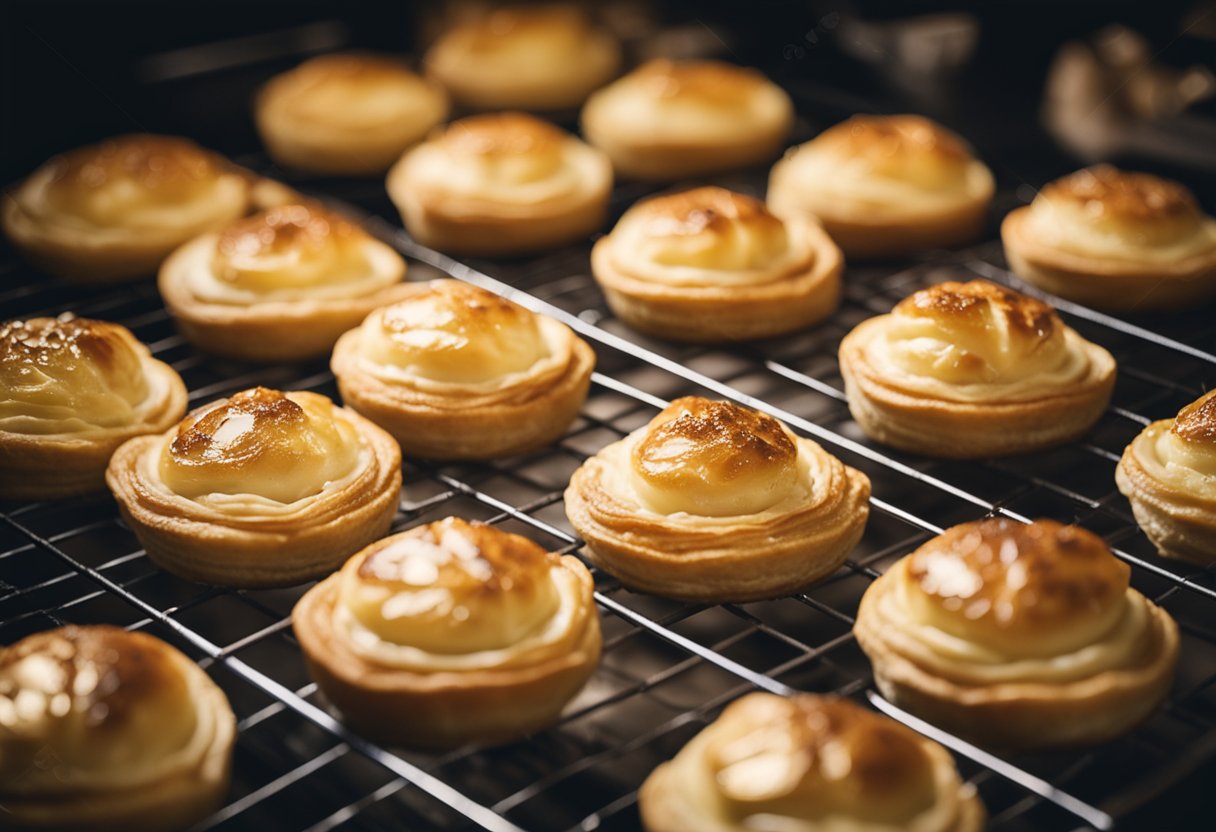As a baker, I understand the importance of using the right ingredients to achieve the perfect texture and flavor in baked goods.
Cake flour is a common ingredient in many cake and pastry recipes, but what happens when you don’t have any on hand? Luckily, there are several substitutes for cake flour that can be used in a pinch.
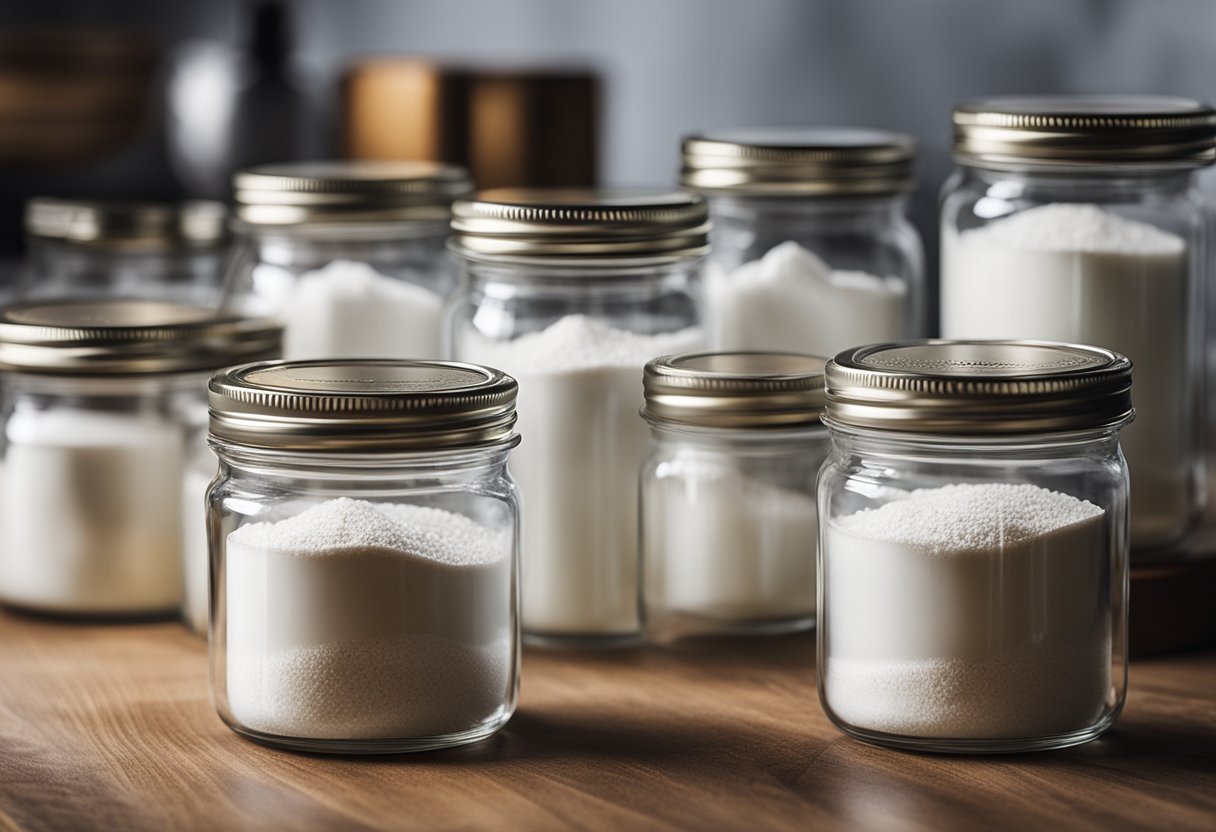
Understanding cake flour is key to finding a suitable substitute. Cake flour is a finely milled flour with a lower protein content than all-purpose flour, which results in a softer, more tender crumb in baked goods.
The lower protein content is achieved by removing the bran and germ from the wheat kernel before milling. This process also gives cake flour a finer texture and a bright white appearance, which is ideal for lighter or whiter cakes and pastries.
When it comes to finding a substitute for cake flour, there are several options available. All-purpose flour is the most common substitute, but there are also gluten-free options like rice flour and potato starch.
Each substitute has its own unique properties and works best in certain recipes. It’s important to understand the role of cake flour in baking and how each substitute can affect the final product.
Key Takeaways
- Cake flour has a lower protein content than all-purpose flour, which results in a softer, more tender crumb in baked goods.
- All-purpose flour is the most common substitute for cake flour, but there are also gluten-free options like rice flour and potato starch.
- It’s important to understand the role of cake flour in baking and how each substitute can affect the final product.
Understanding Cake Flour
As a baker, I’ve learned that different types of flour can greatly affect the texture and taste of baked goods. Cake flour is a common ingredient in many cake recipes, but what makes it different from other types of flour?
In this section, I’ll explain the key characteristics of cake flour and how it affects your baked goods.
Protein Content
One of the main differences between cake flour and other types of flour is its protein content. Cake flour has a lower protein content than all-purpose flour, which makes it ideal for cakes that require a light and tender crumb.
The protein content of cake flour typically ranges from 6-8%, while all-purpose flour has a protein content of around 10-12%.
Gluten Formation
Another way that cake flour differs from all-purpose flour is in its gluten formation. Gluten is formed when the proteins in flour are combined with liquid and agitated, such as when kneading dough.
The more gluten that is formed, the tougher and chewier the final product will be. Cake flour has less protein than all-purpose flour, which means that less gluten will be formed when it is mixed with liquid. This results in a softer and more delicate texture in baked goods.
Bleached vs Unbleached
Cake flour can be either bleached or unbleached. Bleached cake flour has been treated with chemicals to whiten it and make it more acidic, which can affect the texture and taste of baked goods.
Unbleached cake flour is not treated with chemicals and has a more natural color and flavor. Some bakers prefer to use unbleached cake flour because they believe it produces a better-tasting final product.
In summary, cake flour is a low-protein flour that produces a delicate and tender texture in baked goods. Its lower protein content means that less gluten will be formed, resulting in a softer and more delicate texture.
Cake flour can be either bleached or unbleached, and some bakers prefer one over the other for taste and texture reasons.
Role of Cake Flour in Baking
As a baker, I have come to appreciate the importance of using the right type of flour in different recipes. Cake flour is a low-protein flour that is specifically designed for baking delicate cakes, pastries, and other baked goods that require a tender crumb and a light texture.
In this section, I will talk about the role of cake flour in baking and why it is an essential ingredient in many recipes.
Texture and Crumb
Cake flour has a lower protein content compared to all-purpose flour, which makes it ideal for baking cakes and other delicate baked goods. The low protein content means that cake flour produces less gluten when mixed with liquid, resulting in a softer and more tender crumb.
The fine texture of cake flour also allows it to absorb more liquid, which helps to keep cakes moist and tender without becoming dense or heavy.
When baking cakes, the texture and crumb are critical factors that can make or break the final product. Using cake flour can help you achieve a light, fluffy, and tender cake that is perfect for any occasion.
Whether you are baking a classic vanilla cake, a chocolate cake, or a fruit cake, cake flour can help you achieve the desired texture and crumb.
Delicate Baked Goods
Cake flour is not just for baking cakes; it is also an essential ingredient in many delicate baked goods such as pastries, biscuits, and scones.
These baked goods require a light and tender texture, which can be achieved by using cake flour. The low protein content of cake flour allows these delicate baked goods to rise properly without becoming tough or chewy.
When making pastries, biscuits, or scones, it is essential to use cake flour to achieve the desired texture and crumb. Using all-purpose flour or other types of flour with a higher protein content can result in a tough and chewy final product, which is not ideal for delicate baked goods.
In summary, cake flour plays a critical role in baking delicate cakes, pastries, and other baked goods that require a tender crumb and a light texture.
Its low protein content and fine texture make it ideal for achieving the desired texture and crumb in baked goods. If you want to take your baking to the next level, consider using cake flour in your recipes.
Common Substitutes for Cake Flour
When it comes to baking cakes, using the right type of flour is crucial. However, cake flour isn’t always readily available in every kitchen. Fortunately, there are several common substitutes for cake flour that you can use instead.
All-Purpose Flour and Cornstarch
One of the most popular substitutes for cake flour is a combination of all-purpose flour and cornstarch. This combination works well because all-purpose flour has a similar protein content to cake flour, and cornstarch helps to mimic the texture of cake flour.
To make this substitute, simply measure out one cup of all-purpose flour and remove two tablespoons of it. Then, add two tablespoons of cornstarch and sift the mixture together several times until it’s well combined. This substitute can be used in a 1:1 ratio in place of cake flour in most recipes.
Self-Rising Flour
Self-rising flour is another good substitute for cake flour. It’s a combination of all-purpose flour, baking powder, and salt, so it has a similar protein content to cake flour.
However, it’s important to note that self-rising flour has leavening agents already added, so you may need to adjust the amount of baking powder or baking soda in your recipe if you use this substitute.
Bread Flour
While bread flour has a higher protein content than cake flour, it can still be used as a substitute in a pinch. However, keep in mind that using bread flour may result in a slightly denser cake. To use bread flour as a substitute, simply use it in a 1:1 ratio in place of cake flour.
Pastry Flour
Pastry flour is another good substitute for cake flour, as it has a lower protein content than all-purpose flour. This makes it similar in texture to cake flour.
However, it may be difficult to find in some grocery stores. To use pastry flour as a substitute, simply use it in a 1:1 ratio in place of cake flour.
In conclusion, there are several common substitutes for cake flour that you can use if you don’t have any on hand. All-purpose flour and cornstarch, self-rising flour, bread flour, and pastry flour are all good options.
However, keep in mind that using a substitute may slightly alter the texture and flavor of your baked goods, so it’s always best to use cake flour if possible.
Gluten-Free Substitutes for Cake Flour
If you’re looking for a gluten-free substitute for cake flour, there are several options available. Here are some of the most popular gluten-free flours that can be used as a substitute for cake flour.
Rice Flour
Rice flour is a popular gluten-free flour that can be used as a substitute for cake flour. It is made from ground rice and has a slightly sweet taste. Rice flour is also a good source of fiber and protein.
When using rice flour as a substitute for cake flour, it’s important to note that it can make baked goods denser and drier than wheat-based flours. To offset this, you may need to add additional moisture to your recipe.
Almond Flour
Almond flour is another popular gluten-free flour that can be used as a substitute for cake flour. It is made from ground almonds and has a nutty flavor.
Almond flour is also a good source of protein and healthy fats. When using almond flour as a substitute for cake flour, it’s important to note that it is denser than wheat-based flours. To offset this, you may need to use more leavening agents in your recipe.
Oat Flour
Oat flour is a gluten-free flour made from ground oats. It has a slightly sweet taste and is a good source of fiber and protein.
When using oat flour as a substitute for cake flour, it’s important to note that it can make baked goods denser and drier than wheat-based flours. To offset this, you may need to add additional moisture to your recipe.
Gluten-Free Flour
There are several gluten-free flour blends available that can be used as a substitute for cake flour. These blends are typically made from a combination of gluten-free flours, such as rice flour, potato starch, and tapioca flour.
When using a gluten-free flour blend as a substitute for cake flour, it’s important to note that the texture and flavor may be slightly different than using traditional cake flour. You may need to experiment with different blends to find the one that works best for your recipe.
Overall, there are several gluten-free substitutes for cake flour available. By experimenting with different flours and blends, you can create delicious gluten-free baked goods that are just as tasty as their wheat-based counterparts.
Using Substitutes in Different Recipes
Pancakes
When making pancakes, you can substitute cake flour with all-purpose flour. To achieve the same texture as cake flour, you can add a tablespoon of cornstarch to every cup of all-purpose flour. This will make your pancakes lighter and fluffier.
Chocolate Cake
When making chocolate cake, you can use all-purpose flour as a substitute for cake flour. However, to achieve the same texture as cake flour, you can replace two tablespoons of all-purpose flour with two tablespoons of cornstarch for every cup of flour. This will help keep your chocolate cake tender and moist.
Vanilla Cake
When making vanilla cake, you can use all-purpose flour as a substitute for cake flour. However, to achieve the same texture as cake flour, you can replace two tablespoons of all-purpose flour with two tablespoons of cornstarch for every cup of flour. This will help keep your vanilla cake tender and moist.
White Cake
When making white cake, you can use all-purpose flour as a substitute for cake flour. However, to achieve the same texture as cake flour, you can replace two tablespoons of all-purpose flour with two tablespoons of cornstarch for every cup of flour. This will help keep your white cake tender and moist.
Biscuits
When making biscuits, you can use all-purpose flour as a substitute for cake flour. However, to achieve the same texture as cake flour, you can replace two tablespoons of all-purpose flour with two tablespoons of cornstarch for every cup of flour.
This will help keep your biscuits tender and fluffy.
Quick Breads
When making quick breads, you can use all-purpose flour as a substitute for cake flour. However, to achieve the same texture as cake flour, you can replace two tablespoons of all-purpose flour with two tablespoons of cornstarch for every cup of flour. This will help keep your quick breads tender and moist.
When substituting cake flour with all-purpose flour, it is important to note that all-purpose flour has a higher protein content than cake flour.
This means that your baked goods may come out slightly denser than if you had used cake flour. However, by adding cornstarch to your all-purpose flour, you can achieve a similar texture to cake flour.
In conclusion, when making different recipes such as pancakes, chocolate cake, vanilla cake, white cake, biscuits, and quick breads, you can use all-purpose flour as a substitute for cake flour.
By adding cornstarch to your all-purpose flour, you can achieve a similar texture to cake flour.
How to Measure and Sift Substitutes
When it comes to baking, measuring and sifting ingredients is crucial to achieving the perfect texture and consistency in your baked goods.
This is especially true when using substitutes for cake flour. Here are a few tips on how to measure and sift your substitutes properly:
Measuring Substitutes
When measuring your substitute for cake flour, it’s important to remember that different flours have different weights and densities. This means that a cup of one type of flour may not weigh the same as a cup of another type of flour.
To ensure accuracy, it’s best to weigh your flour using a kitchen scale. However, if you don’t have a scale, you can use the following method:
- Fluff up your substitute flour with a fork or whisk to loosen it up.
- Spoon the flour into your measuring cup, being careful not to pack it down.
- Level off the top of the measuring cup with a straight edge, such as a knife.
Sifting Substitutes
Sifting your substitute flour is important to remove any lumps and aerate the flour, which helps to create a lighter texture in your baked goods. If you don’t have a sifter, you can use a fine-mesh sieve instead.
Here’s how to sift your substitute flour:
- Place your flour into a fine-mesh sieve or sifter.
- Hold the sieve or sifter over a bowl or piece of parchment paper.
- Gently tap or shake the sieve or sifter to sift the flour through.
- If any lumps remain, use a spoon or your fingers to break them up and sift the flour again.
Remember to only sift your substitute flour immediately before using it in your recipe, as sifting can cause the flour to lose moisture and affect the final result of your baked goods.
By following these tips for measuring and sifting your substitutes for cake flour, you can ensure that your baked goods turn out perfectly every time.
Nutritional Differences Between Cake Flour and Substitutes
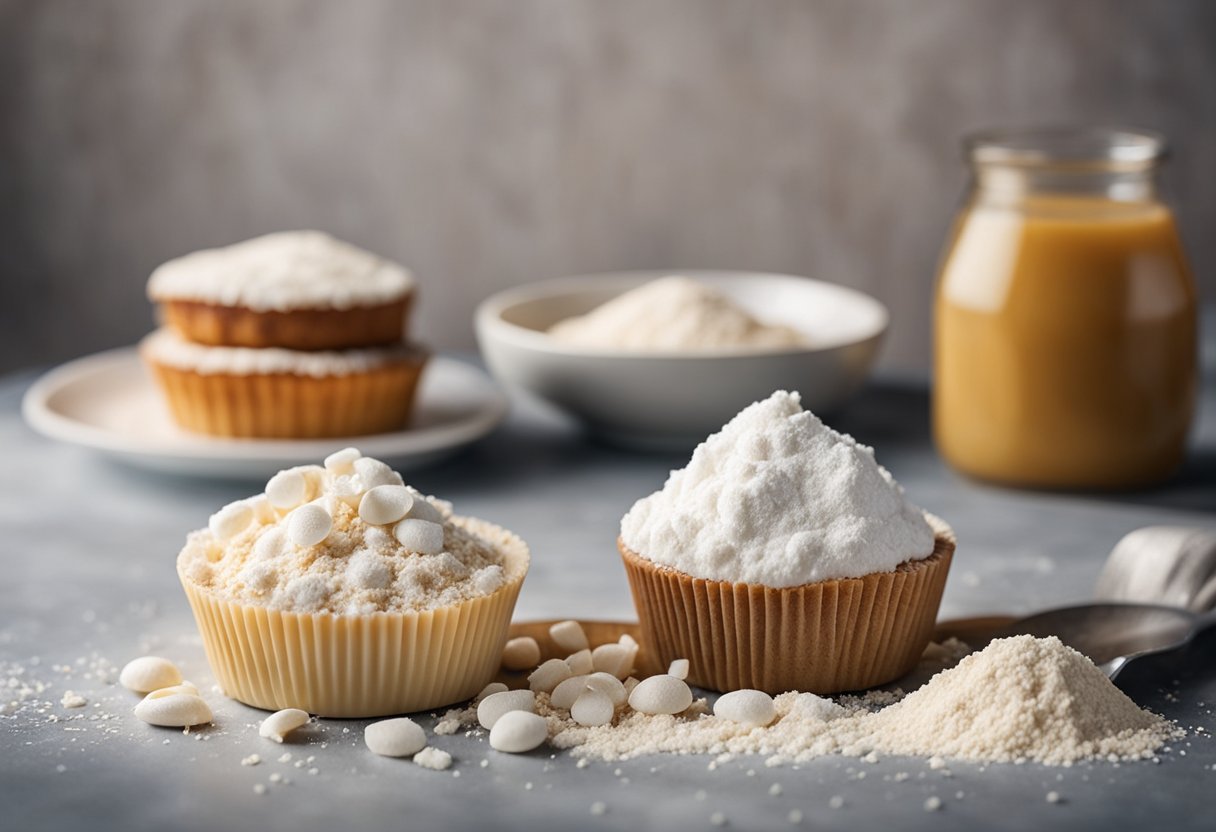
When it comes to baking, choosing the right flour can make all the difference. While cake flour is commonly used in cake recipes, it may not always be readily available.
Fortunately, there are several substitutes for cake flour that can be used in a pinch. But what are the nutritional differences between cake flour and its substitutes?
First, let’s take a look at cake flour. Cake flour is a finely milled flour that is made from soft wheat. It has a lower protein content than all-purpose flour, which makes it ideal for cakes and other baked goods that require a tender crumb.
One cup of cake flour contains approximately 400 calories, 8 grams of protein, 1 gram of fiber, and 86 grams of carbohydrates.
Now, let’s compare that to some of the most common substitutes for cake flour:
- All-purpose flour: All-purpose flour is a versatile flour that can be used in a variety of baked goods. However, it has a higher protein content than cake flour, which can result in a tougher crumb. One cup of all-purpose flour contains approximately 455 calories, 13 grams of protein, 3 grams of fiber, and 95 grams of carbohydrates.
- Pastry flour: Pastry flour is another option for those looking to substitute cake flour. It has a slightly higher protein content than cake flour, but is still lower than all-purpose flour. One cup of pastry flour contains approximately 400 calories, 9 grams of protein, 2 grams of fiber, and 83 grams of carbohydrates.
- Cornstarch: Cornstarch can also be used as a substitute for cake flour. However, it is important to note that cornstarch does not contain any protein, which can result in a more delicate crumb. One cup of cornstarch contains approximately 488 calories, 0 grams of protein, 0 grams of fiber, and 117 grams of carbohydrates.
- Almond flour: For those looking for a gluten-free option, almond flour can be used as a substitute for cake flour. Almond flour has a higher fat content than cake flour, which can result in a moister crumb. One cup of almond flour contains approximately 640 calories, 24 grams of protein, 12 grams of fiber, and 24 grams of carbohydrates.
It is important to note that while these substitutes can be used in place of cake flour, they may result in a slightly different texture and flavor.
Additionally, some substitutes may be higher in calories, protein, or carbohydrates than cake flour. When choosing a substitute, it is important to consider the specific needs of your recipe and adjust accordingly.
Overall, while cake flour may be the preferred choice for some recipes, there are several substitutes that can be used in a pinch.
By understanding the nutritional differences between cake flour and its substitutes, you can make an informed decision when it comes to choosing the right flour for your baked goods.
Storing Flour Substitutes
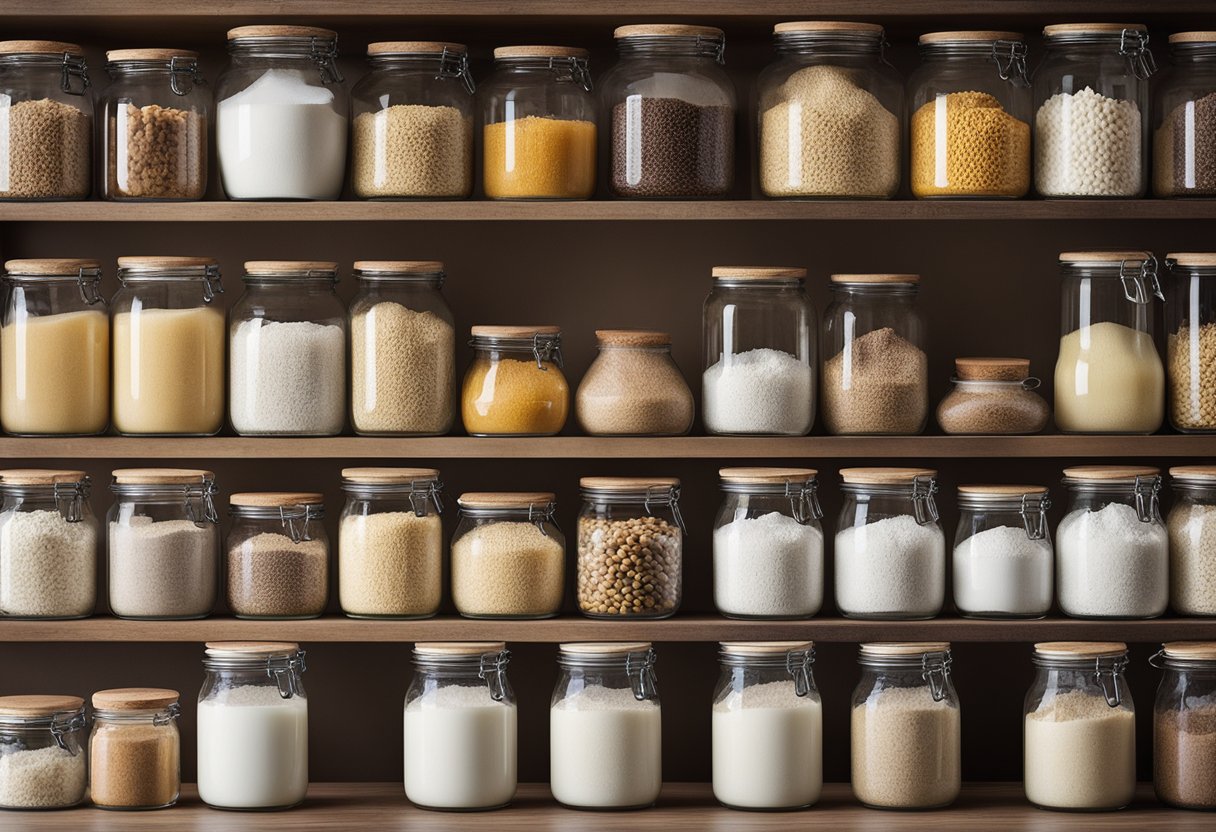
When it comes to storing flour substitutes, it’s important to keep them in a cool, dry place to prevent spoilage. Most substitutes for cake flour are pantry staples, so they can be stored alongside your all-purpose flour and other baking ingredients.
If you’re using a homemade cake flour substitute made with cornstarch, it’s important to store it in an airtight container to prevent moisture from getting in. Moisture can cause the cornstarch to clump, which can affect the texture of your baked goods.
Another important thing to keep in mind is that flour substitutes have different shelf lives than all-purpose flour.
For example, almond flour and coconut flour have a shorter shelf life and should be stored in the refrigerator or freezer to extend their lifespan.
Here’s a quick guide to storing some common flour substitutes:
- Almond flour: Store in an airtight container in the refrigerator or freezer for up to 6 months.
- Coconut flour: Store in an airtight container in the refrigerator or freezer for up to 1 year.
- Oat flour: Store in an airtight container in a cool, dry place for up to 3 months.
- Cornstarch: Store in an airtight container in a cool, dry place for up to 18 months.
It’s also important to note that some flour substitutes, like almond flour and coconut flour, can go rancid if not stored properly. Be sure to check for any off odors or flavors before using them in your baking.
In summary, storing flour substitutes is easy as long as you keep them in a cool, dry place and follow the recommended storage guidelines for each type of substitute.
By doing so, you can ensure that your flour substitutes stay fresh and ready to use whenever you need them.
Frequently Asked Questions
What can I use if I don’t have cake flour?
If you don’t have cake flour, you can use all-purpose flour as a substitute. However, cake flour has a lower protein content than all-purpose flour, so you may need to adjust the recipe accordingly.
You can also use a mixture of all-purpose flour and cornstarch as a substitute for cake flour.
What is a substitute for 2 cups of cake flour?
If you need to substitute 2 cups of cake flour, you can use 1 3/4 cups of all-purpose flour and 1/4 cup of cornstarch. Sift the mixture together several times to ensure that it is well combined before using it in your recipe.
How do you make cake flour from all-purpose flour?
To make cake flour from all-purpose flour, measure out 1 cup of all-purpose flour, then remove 2 tablespoons of the flour and replace it with 2 tablespoons of cornstarch.
Sift the mixture together several times to ensure that it is well combined before using it in your recipe.
Can I substitute cake flour for all-purpose flour in cookies?
While you can substitute cake flour for all-purpose flour in cookies, it is not recommended. Cake flour has a lower protein content than all-purpose flour, which can result in cookies that are too delicate and crumbly.
Cake flour vs all-purpose flour
Cake flour has a lower protein content than all-purpose flour, which makes it ideal for delicate baked goods like cakes and pastries.
All-purpose flour has a higher protein content, which makes it more suitable for bread and other baked goods that require a stronger structure.
Cake flour vs bread flour
Cake flour and bread flour are both types of wheat flour, but they have different protein contents. Cake flour has a protein content of around 7-8%, while bread flour has a protein content of around 12-14%.
This makes bread flour ideal for bread and other baked goods that require a strong structure, while cake flour is better suited for delicate baked goods like cakes and pastries.


